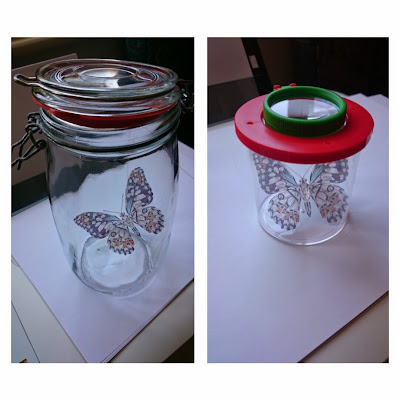I was drawn to this exhibition after wanting to know what sort of
unusual collections artists themselves kept, and if these had an obvious
connection to the work that they produce. Having a small collection of turtle
figures and other things featuring images of this animal myself, I felt like I
could relate to the array of 'knik knaks' like the elephants owned by Peter Blake. The parallels between the artist and their items
were sometimes easier to understand than others, but it is hard to
fully understand why these artists acquired and saved these objects,
photos and the like, without asking them to explain in their own words.

The first artist that intrigued me on entering
the exhibition was Damien Hirst. His 'fascination with the
delicate balance between life an death' is not dissimilar to his most famous
works, but this enchantment of his also reached out to me as a
person, and admirer of animals. The links to the clinical display of
Victorian collectors and the lack of sentimentality about the loss of life are
powerful and thought-provoking, something that needs to be done to
reinforce morals that I feel have somehow been lost in humans that do terrible
things such as poaching. Linking to
his taxidermied works, the pieces in this exhibition signify his
obsession with preventing anything from being affected by
time, making it seem immortal whilst also looking into physical
decay.


In the following room, were a mixture of images and Japanese woodblock
prints collected by Sol LeWitt. The combination of the vibrant colours of
the woodblocks and the black and white modernist photography framed works gave
a strong sense of his interests and the way he approached photography. Whilst
serving in the US army during the Korean War, LeWitt acquired
these nineteenth-century woodblocks from Japan, making these some of the
earliest parts of his belongings. I particularly liked the flattened forms
that the outlined images create, so
would like to explore printmaking further in this project. This
contrasts to his documentation of the architectural details and possessions in
his Manhattan loft, arranged in grids of nine square black and white photos.
The collections of some bizarre and beautiful pieces have been
described as both addictive and exciting, which is something I feel like I can
start to understand myself through sorting out my own belongings. Every item
holds memories that are significant to me, so they act as reminders of places
I've been to or the people that gave them to me. The idea of
collecting items, ranging from art to memorabilia, always seems to be a variety
of things that please the eye, maybe not to everyone, but they show the tastes
and sometimes even inspiration of what makes us tick as a person or an artist.


































